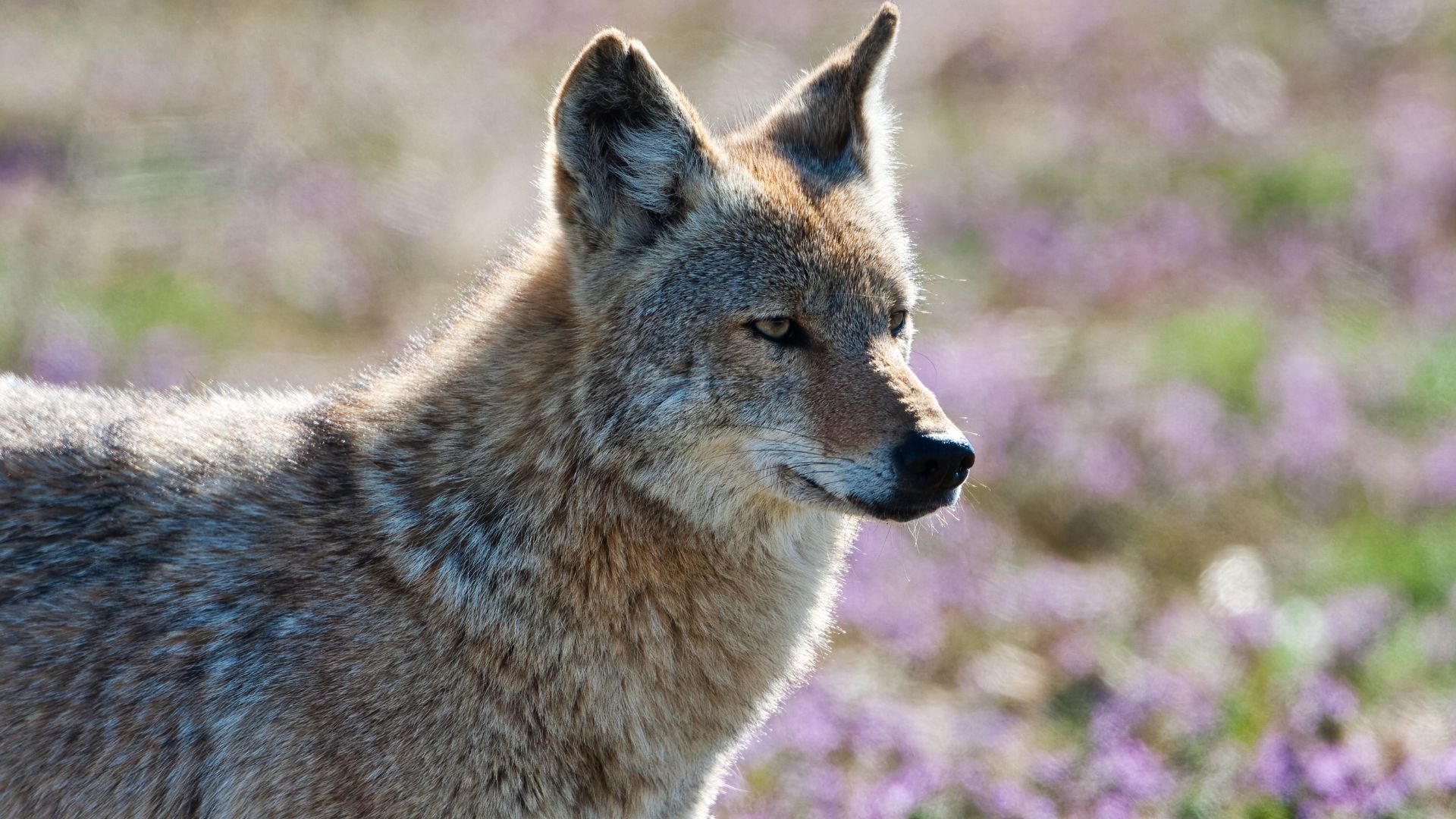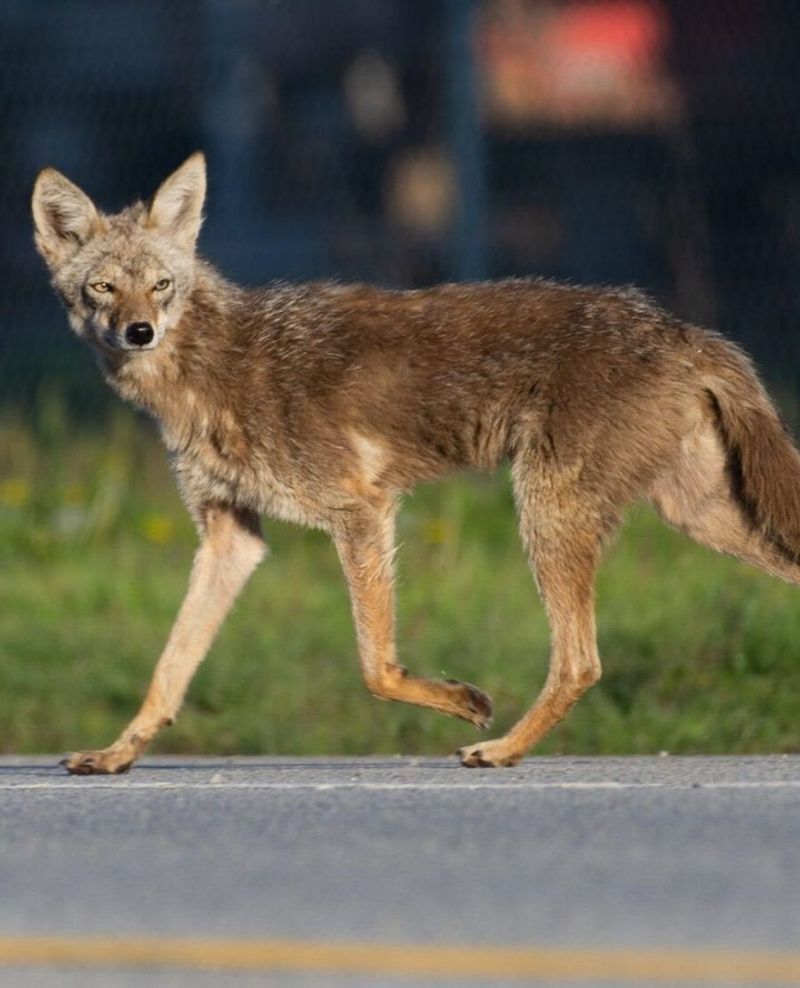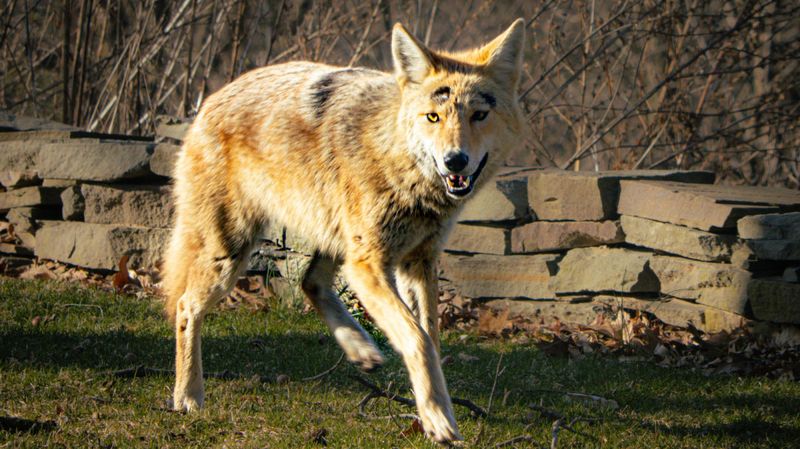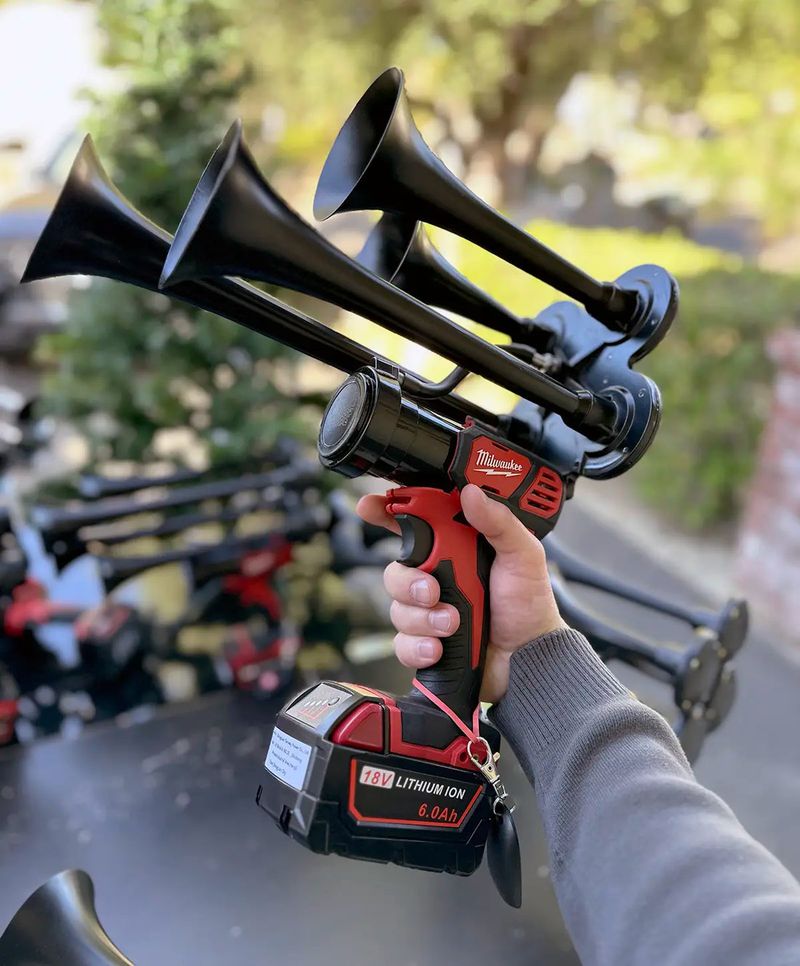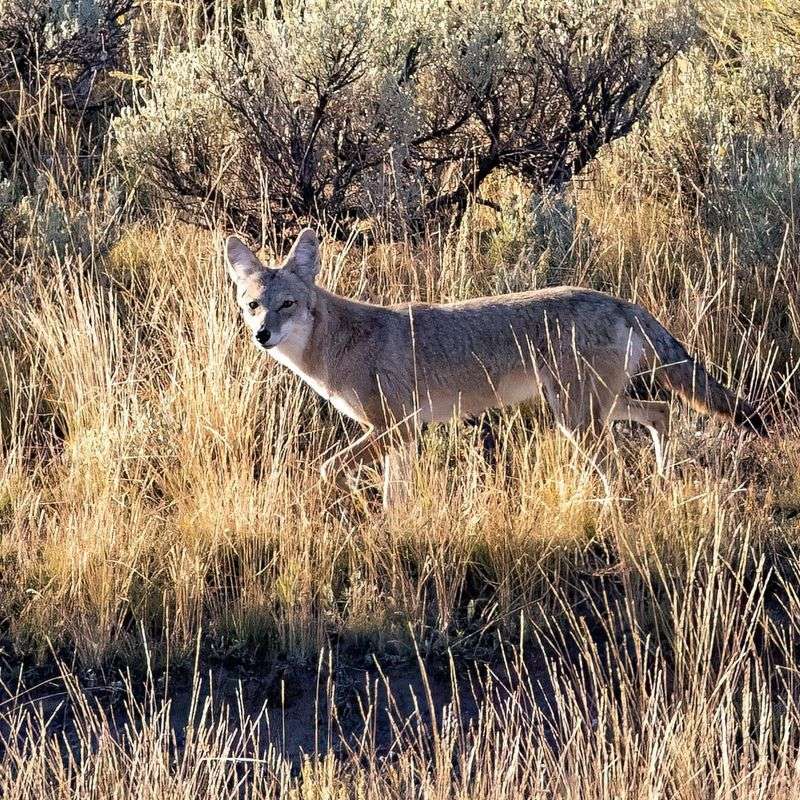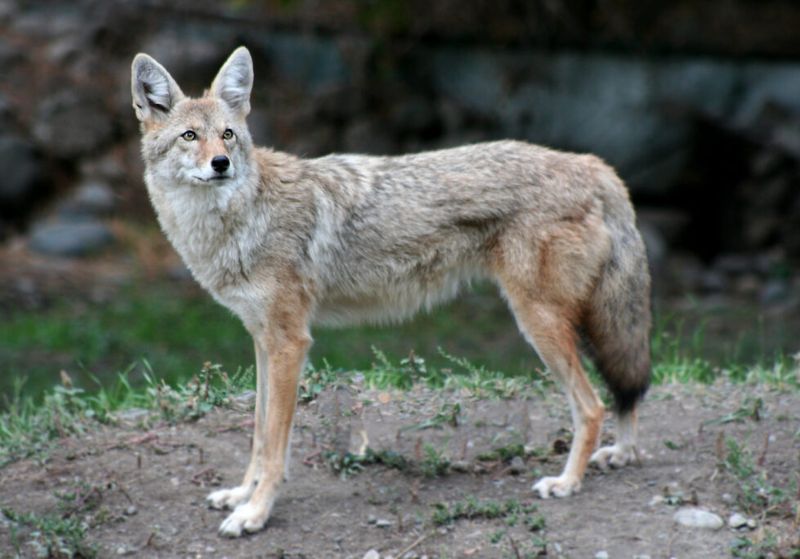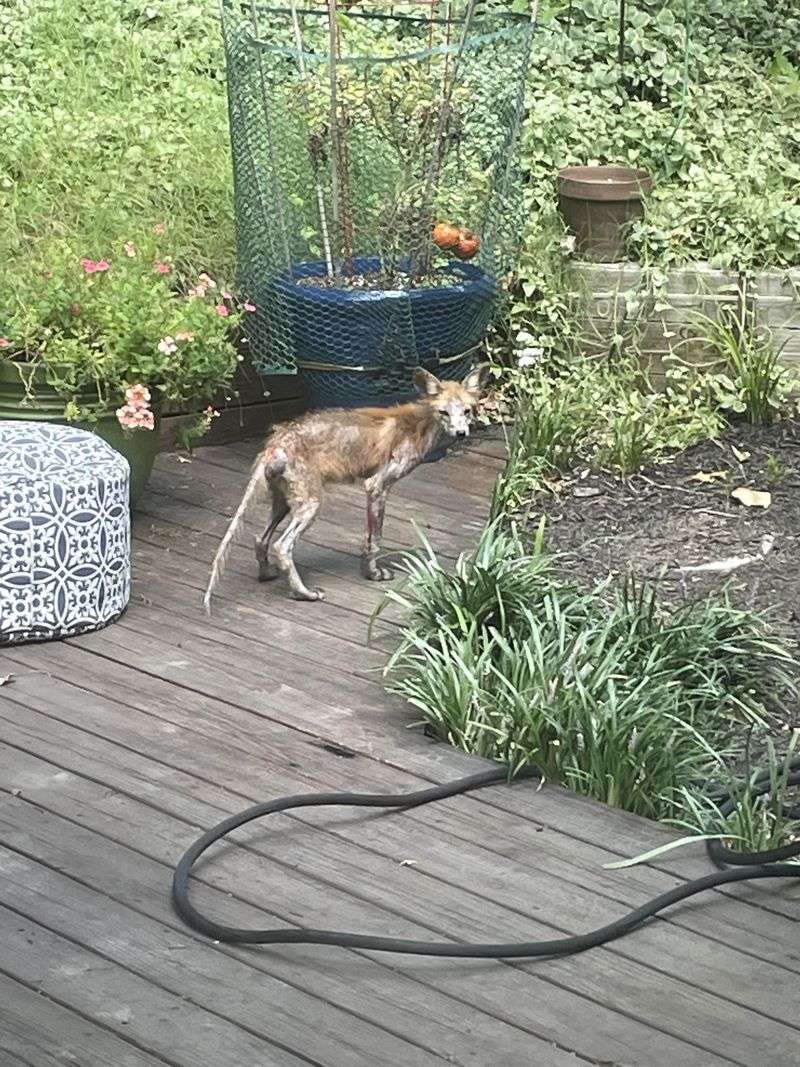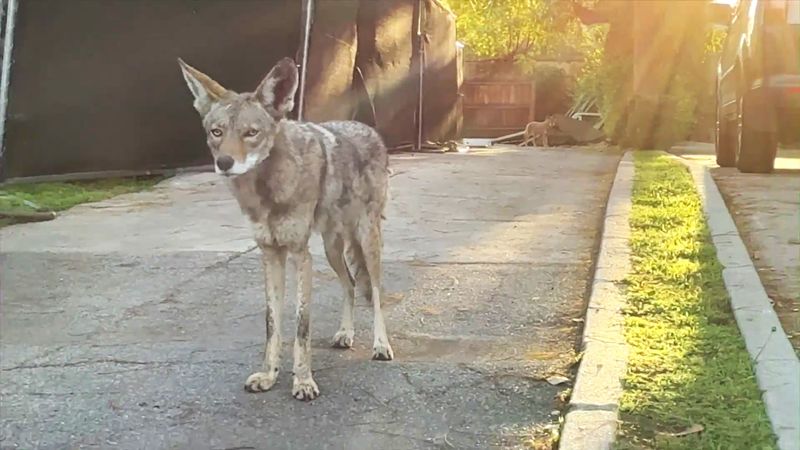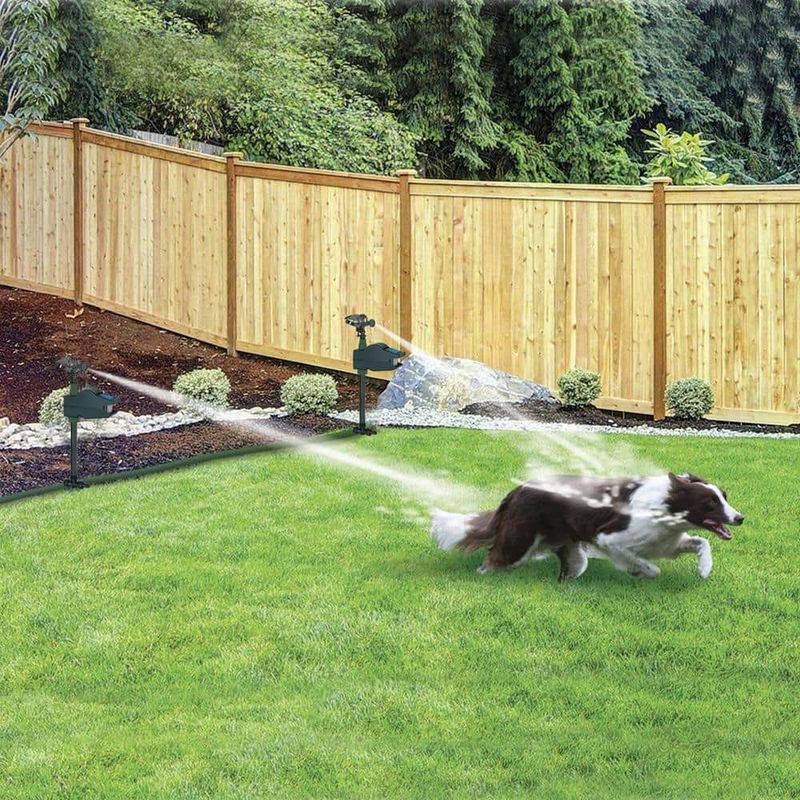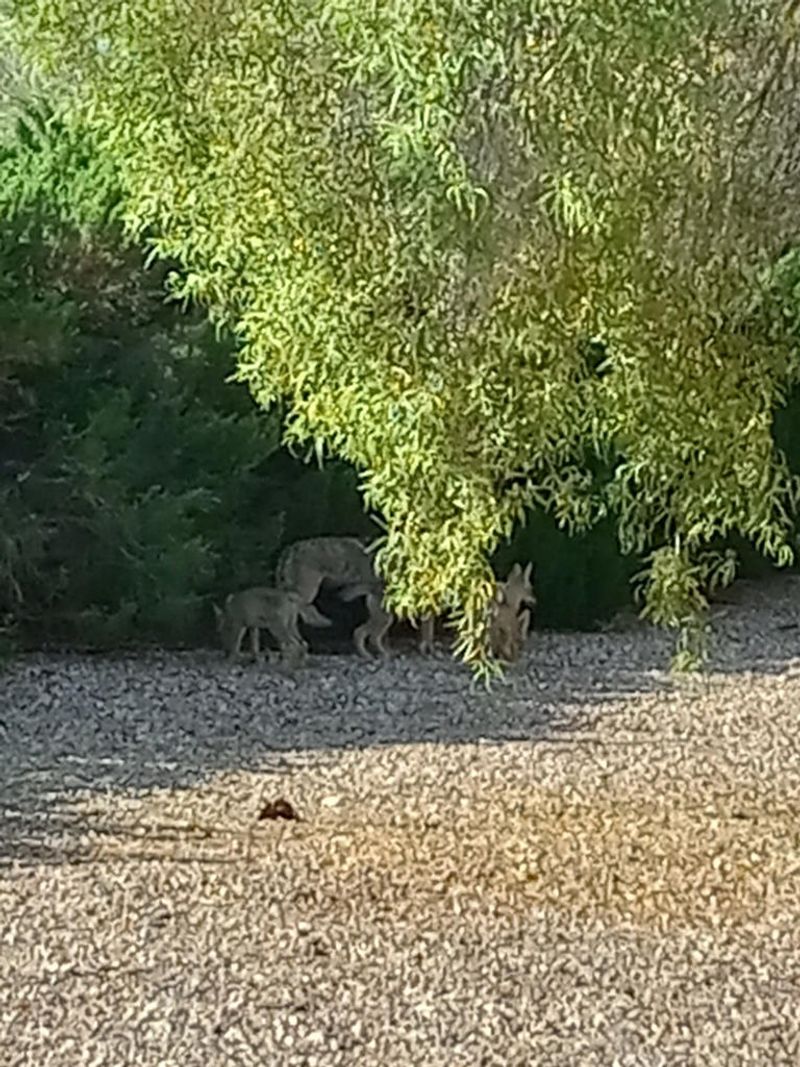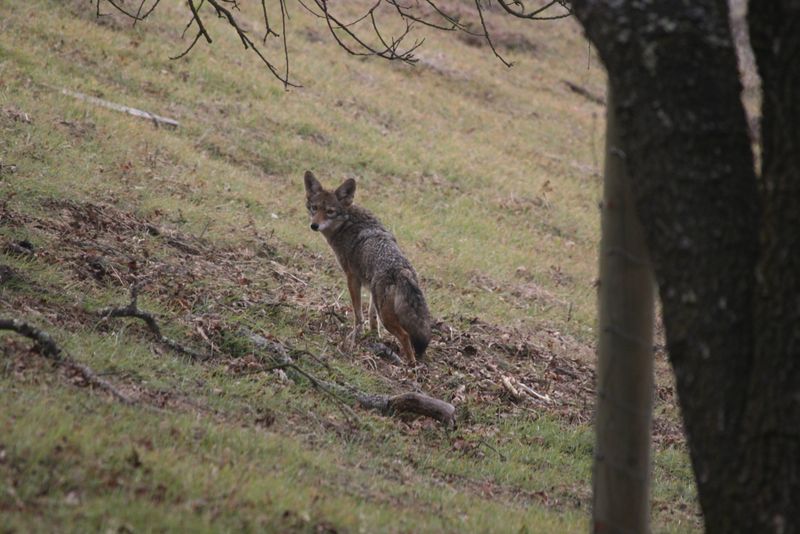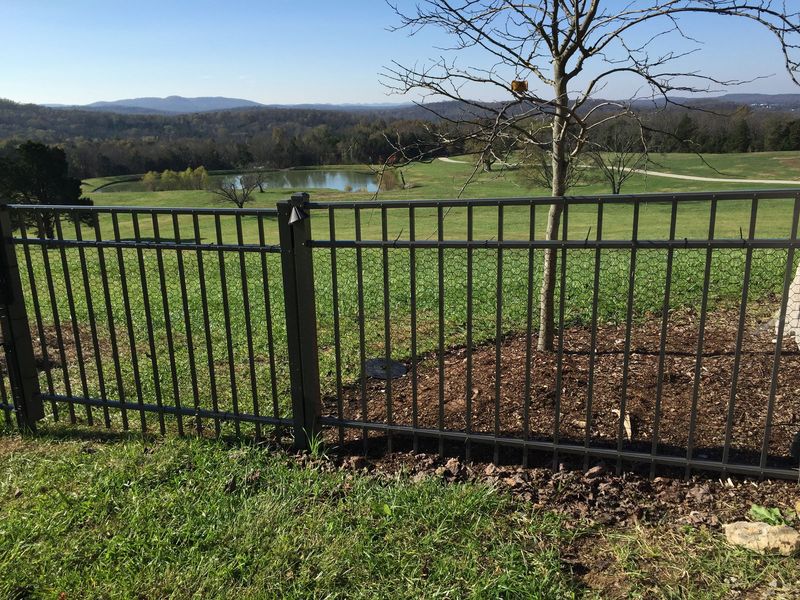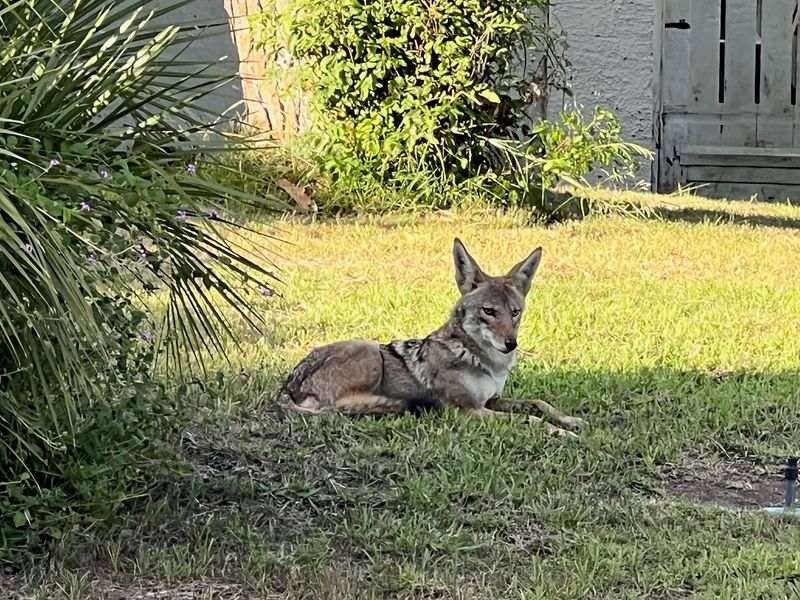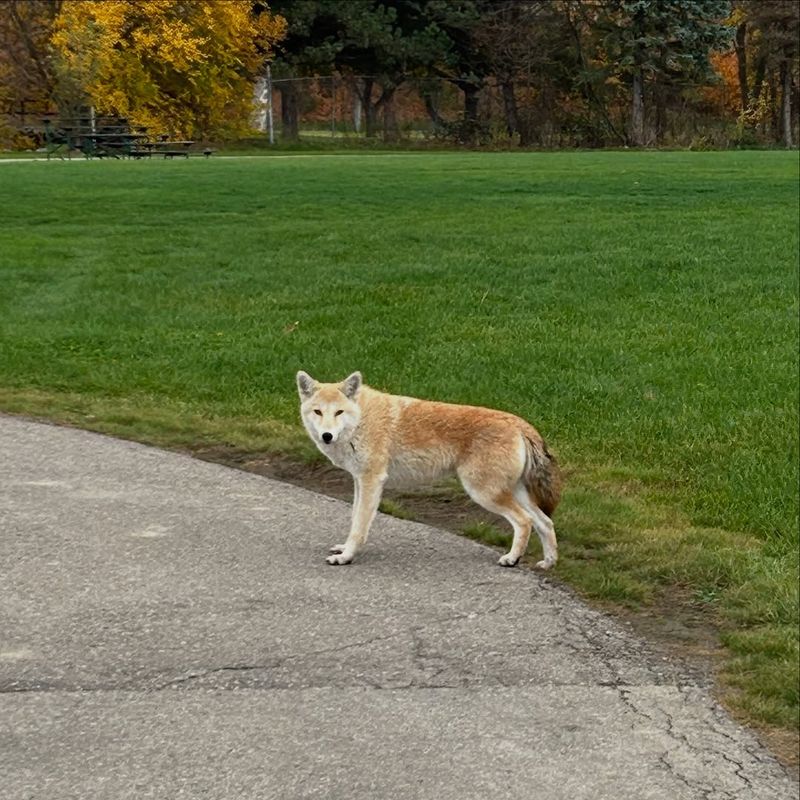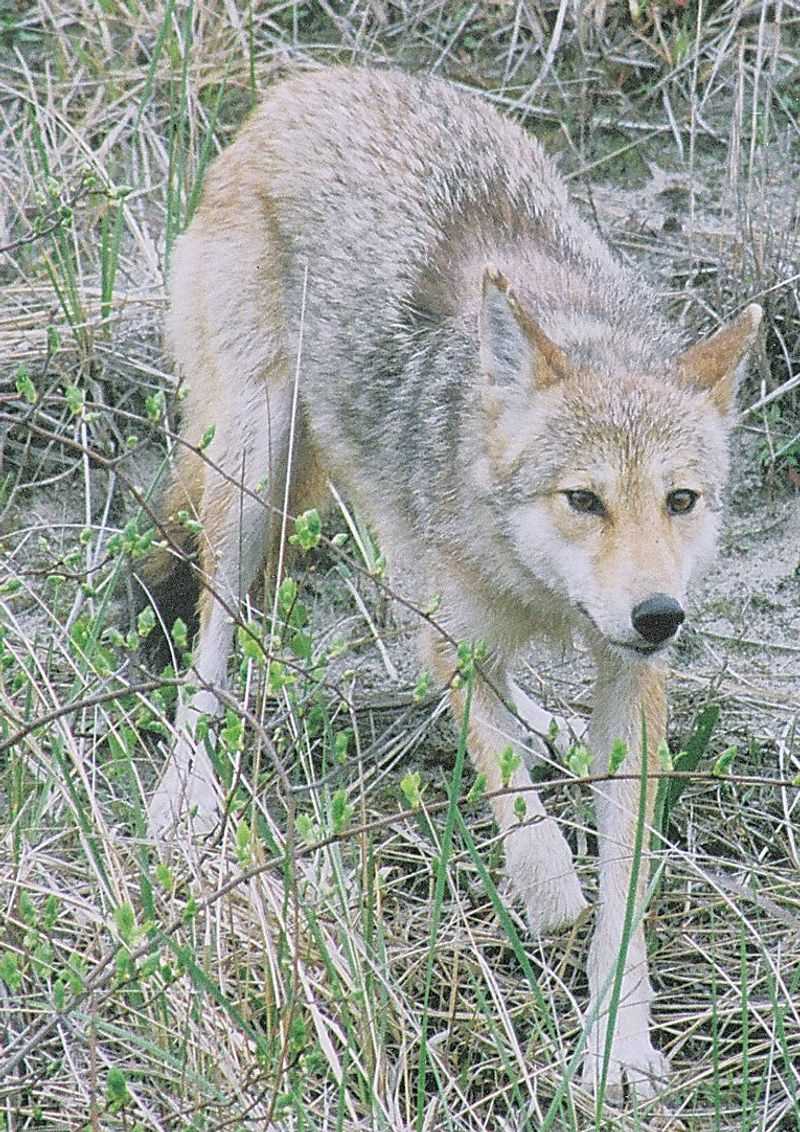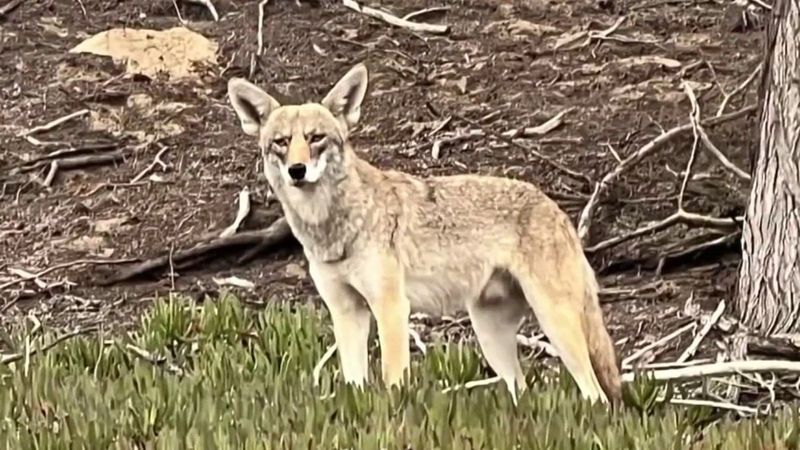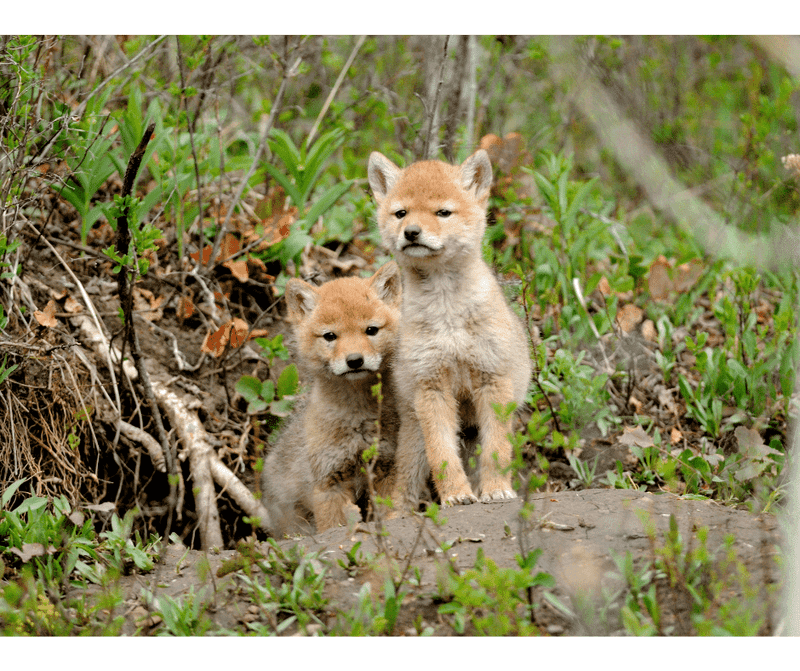Spotting a coyote in your yard can be a real surprise—and maybe even a little scary. These smart animals are adapting to life near people, showing up more often in neighborhoods than you might expect.
Understanding how to respond calmly and safely is key to keeping both you and the coyote out of trouble. It’s all about respecting their space while protecting your home.
I’ll share what you should do if a coyote visits, plus some common mistakes to avoid so you can feel confident outdoors again.
1. Stay Calm And Back Away Slowly
Your heart might race when spotting those amber eyes and pointed ears, but panicking only makes the situation worse. Coyotes are typically more afraid of you than you are of them.
Maintain your distance while backing away slowly into your home or a safe area. Avoid turning your back or making sudden movements that might trigger the coyote’s chase instinct.
Remember that coyote attacks on humans are extremely rare. Most coyotes want nothing more than to escape the encounter as quickly as possible, so giving them space is your best first step.
2. Make Yourself Look Bigger
Raising your arms above your head creates an imposing silhouette that triggers a coyote’s natural caution. Wave those arms slowly while facing the animal directly to maximize your apparent size.
Open your jacket wide if you’re wearing one, or hold up a backpack or other item to enhance your profile. The goal is to appear as intimidating as possible without making aggressive moves.
Many wildlife experts recommend standing tall on tiptoes for additional height. This posturing communicates to the coyote that you’re not prey and could potentially be dangerous to them.
3. Make Loud Noises
Coyotes have sensitive hearing, making noise an effective deterrent when they venture too close. Clap your hands sharply, shout in a deep voice, or bang pots together to create startling sounds that will make them think twice about sticking around.
Carry a whistle or air horn when you’re in areas known for coyote activity. These portable noisemakers can be lifesavers during unexpected encounters and require minimal effort to use effectively.
The sound of jangling keys or coins in a metal can works remarkably well too. The unfamiliar metallic noise is particularly unsettling to wildlife and often prompts a quick retreat.
4. Use Hazing Techniques
Hazing involves using multiple senses to create an uncomfortable environment for the coyote. Combine loud noises with visual deterrents like waving your arms or flashing a light to overwhelm their senses.
Spray the coyote with a garden hose if one is handy. The unexpected stream of water creates both a physical and psychological barrier that few wild animals will challenge.
Toss small objects near (not at) the coyote to startle it. Tennis balls, small sticks, or even gravel scattered near them can emphasize your message without causing harm to the animal.
5. Protect Your Pets Immediately
Small pets are particularly vulnerable to coyote encounters. Bring cats and small dogs indoors immediately if you spot a coyote, even if they’re in a fenced area – coyotes can easily scale fences up to six feet tall.
For larger dogs, call them to your side and leash them promptly. Even breeds that outweigh coyotes can sustain serious injuries from these wild canines, who fight with different tactics than domestic dogs.
Keep your pets inside for at least 30 minutes after the coyote leaves. These clever animals sometimes retreat temporarily only to return when they think the coast is clear.
6. Secure Food Sources
Coyotes are opportunistic feeders drawn to easy meals. Immediately bring in pet food bowls, fallen fruit, or any food scraps that might be attracting them to your property.
Check your trash cans for security, ensuring lids are tightly fastened with bungee cords if necessary. A single accessible garbage can might be the reason the coyote selected your yard in the first place.
Bird feeders often inadvertently feed coyotes, not through the seeds themselves but by attracting small rodents that coyotes hunt. Consider temporarily removing feeders until the coyote has moved on from your neighborhood.
7. Call Animal Control For Unusual Behavior
Normal coyote behavior includes being skittish around humans and quickly retreating when confronted. If the animal appears sick, injured, or unusually aggressive, it’s time to call in professionals.
Signs of rabies include staggering, excessive drooling, or apparent disorientation. Never approach a coyote displaying these symptoms, as rabies is fatal without prompt medical treatment.
Take note of the coyote’s exact location before calling, and try to keep it in sight from a safe distance. This information helps animal control officers respond more effectively to the situation.
8. Alert Your Neighbors
A coyote rarely limits visits to just one property. Informing nearby residents creates a neighborhood-wide awareness that helps protect everyone’s pets and children from potential encounters.
Use your community’s social media page or text message group to spread the word quickly. Include the time, location, and behavior of the coyote to help neighbors assess their own risk level.
Coordinated neighborhood responses are particularly effective. When multiple households employ deterrent strategies simultaneously, coyotes learn that the entire area is unwelcoming rather than just avoiding a single property.
9. Install Motion-Activated Deterrents
Motion-sensing sprinklers deliver a startling spray of water when triggered by movement. These devices work day and night, teaching coyotes that your yard means an unpleasant surprise every time.
Solar-powered flashing lights mimic the reflection of predator eyes, triggering instinctive caution in coyotes. Placing several around your property perimeter creates an effective psychological barrier against future visits.
Ultrasonic repellers emit high-frequency sounds that irritate coyotes but are inaudible to humans. While not 100% effective alone, they work well when combined with other deterrents as part of a comprehensive strategy.
10. Remove Potential Den Sites
Coyotes seek sheltered, secluded spaces for raising their young. Clear out dense brush piles, overgrown areas under decks, and other potential hiding spots to make your property less appealing for settlement.
Trim back vegetation that provides cover, especially near the ground. Coyotes prefer to travel along edges where they can quickly duck into hiding, so eliminating these corridors reduces their comfort on your property.
Block access to spaces under sheds, porches, and outbuildings with hardware cloth or fencing. Once secured, check these spots periodically to ensure your barriers remain intact, as coyotes can be persistent when seeking shelter.
11. Maintain Consistent Deterrence
Coyotes are intelligent animals that quickly learn patterns. Varying your deterrent methods prevents them from becoming accustomed to a single approach and finding ways around it.
Establish a regular yard patrol routine, especially during dawn and dusk when coyotes are most active. Your consistent human presence serves as a powerful deterrent that reinforces your territory boundaries.
Keep up deterrent efforts for at least two weeks after a sighting. Coyotes often circle back to check previously successful hunting grounds, so maintaining vigilance even after they seem to have moved on is crucial for long-term success.
12. Install Proper Fencing
Effective coyote-proof fencing needs to be at least six feet tall to prevent jumping. Adding an outward-facing 15-degree angle at the top provides extra security against these athletic climbers.
Bury fence material at least 12 inches underground or install an L-shaped mesh apron extending outward from the fence base. This crucial step prevents coyotes from digging their way onto your property, a common entry method they employ.
Gate areas require special attention as they’re often the weakest point in your perimeter. Ensure gates close securely with minimal ground clearance and consider additional locks or barriers at these vulnerable access points.
13. Create A Community Action Plan
Establishing neighborhood watch groups specifically for wildlife sightings creates a coordinated response system. When multiple neighbors report and respond to coyote activity, the animals learn to avoid the entire area rather than just individual properties.
Work with local wildlife officials to develop area-specific strategies. Many municipalities have urban wildlife management teams that can provide guidance tailored to your community’s unique geography and coyote population.
Organize educational workshops for neighborhood residents. Understanding coyote behavior reduces fear-based reactions and promotes more effective, science-based management approaches that benefit both humans and wildlife.
14. Don’t Run Away
Running triggers a coyote’s natural chase instinct, potentially transforming a curious animal into a pursuer. Even though your instinct says to flee, standing your ground is far safer in this situation.
Quick movements of any kind can be misinterpreted as prey behavior. Coyotes have evolved to chase running animals, so your rapid retreat might confuse their natural programming about whether you’re a threat or potential food.
Moving backward slowly while facing the coyote is the better alternative. This measured retreat maintains your dominant position while increasing distance between you and the animal without triggering their chase response.
15. Don’t Feed Coyotes
Intentional feeding creates dangerous habituation, teaching coyotes to associate humans with food. Once this connection forms, coyotes lose their natural wariness and become increasingly bold in approaching people.
Even indirect feeding through unsecured trash or pet food left outdoors contributes to the problem. Coyotes that find easy meals return repeatedly, eventually establishing territory that includes your property as part of their regular food route.
Habituated coyotes often end up euthanized due to increasing aggression. What begins as seemingly harmless feeding ultimately leads to the animal’s death when wildlife officials must remove problem coyotes that no longer fear humans.
16. Don’t Try To Trap Them Yourself
Amateur trapping attempts frequently backfire, resulting in injured animals or accidental captures of pets or non-target wildlife. Trapping requires specific knowledge of coyote behavior and proper equipment that most homeowners simply don’t possess.
Many states have strict regulations regarding wildlife trapping, with permits required and specific protocols that must be followed. Violating these laws can result in significant fines, even when your intentions were good.
Relocation rarely solves the problem anyway. Removed coyotes create territory vacuums quickly filled by new coyotes, while the relocated animal faces poor survival odds in unfamiliar territory. Professional wildlife management offers more effective, humane solutions.
17. Don’t Approach Coyote Pups
Coyote pups may appear abandoned or in need of help, but mother coyotes often leave their young temporarily while hunting. Approaching these seemingly helpless animals frequently leads to dangerous encounters with fiercely protective parents lurking nearby.
Even well-intentioned rescue attempts typically harm rather than help. Young coyotes require specialized care that differs significantly from domestic puppies, and removing them unnecessarily separates families that were never actually in distress.
If you spot coyote pups on your property, contact wildlife officials immediately rather than intervening. They can assess whether the animals truly need assistance and have the proper resources to handle the situation safely for both humans and wildlife.

